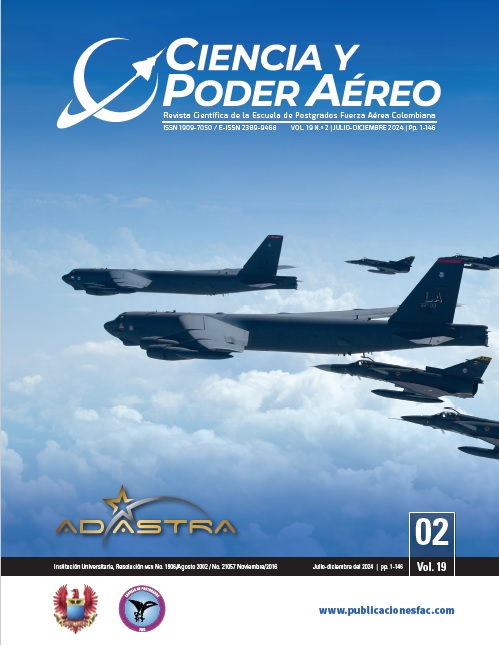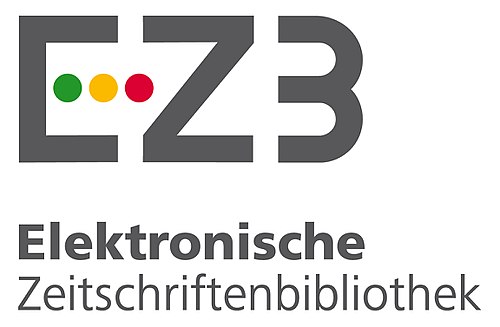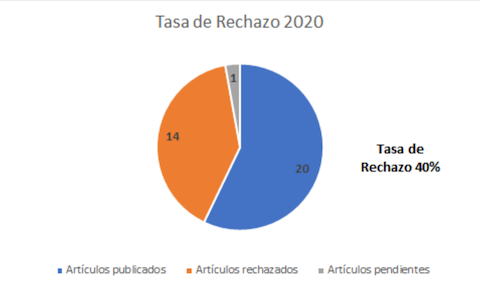Dinámicas de producción de gases de efecto invernadero en los sectores de acero y de vehículos
DOI:
https://doi.org/10.18667/cienciaypoderaereo.813Palabras clave:
sistemas dinámicos, gases de invernadero, modelado, producción de acero, producción de vehículosResumen
El sector de fundición y el sector automotriz son fuente de emisiones de gases de efecto invernadero, entender las relaciones y dinámicas entre ambos sectores permite diseñar mejores estrategias que busquen reducir los niveles de emisión de gases de efecto invernadero y así lograr la mitigación del cambio climático. Dado que la dinámica de un sector está influenciada por la dinámica propia y la del otro, sujeto también a límites de crecimiento, el objetivo de este documento es diseñar un sistema que represente la interacción entre el sector de la fundición de acero y el sector de la automoción lo que permite identificar la dinámica en términos de generación de gases de efecto invernadero.
Los resultados muestran una interdependencia entre los sectores, que está determinada por la dinámica del crecimiento económico y tiene un impacto en niveles más altos de CO2. La modelación con dinámicas complejas es fundamental para comprender la dinámica e interrelaciones entre sectores y su impacto en los niveles de gases de efecto invernadero, lo que permite un mejor diseño de las medidas que buscan reducir los niveles de emisiones de gases de efecto invernadero y mitigar el cambio climático.
Descargas
Referencias
Abramovitz, M. (1989). Thinking About Growth and Other Essays on Economic Growth and Welfare. Cambridge University Press.
Aracil, J. y Gordillo, F. (1997). Dinámica de sistemas. Alianza Editorial.
Araújo, J. A. & Schalch, V. (2014). Recycling of electric arc furnace (EAF) dust for use in steel making process. Journal of Materials Research and Technology, 3(3), 274-279. https://doi.org/10.1016/j.jmrt.2014.06.003
Bayer, S. (2004). Business Dynamics: Systems Thinking and Modeling for a Complex World. Interfaces, 34(4), 324-327.
Bernstein, B. B. (2003). Class, Codes and Control. Psychology Press.
Canals-Casals, L., Martínez-Laserna, E., García, B. A. & Nieto, N. (2016). Sustainability Analysis of the Electric Vehicle Use in Europe for CO2 Emissions Reduction. Journal of Cleaner Production, 127, 425-437. https://doi.org/10.1016/j.jclepro.2016.03.120
Chianese, D. S-, Rotz, C. A. & Richard, T. L. (2009). Simulation of nitrous oxide emissions from dairy farms to assess greenhouse gas reduction strategies. Transactions of the asabe, 52(4), 1325-1335. https://tinyurl.com/42957p7t
Da Silva, M. C., Bernardes, A. M., Bergmann, C. P., Tenório, J. A. S. & Espinosa, D. C. R. (2008). Characterization of Electric Arc Furnace Dust Generated During Plain Carbon Steel Production. Ironmaking & Steelmaking, 35(4), 315-320. https://doi.org/10.1179/030192307X232936
Del Prado, A., Misselbrook, T., Chadwick, D., Hopkins, A., Dewhurst, R. J, Davison, P., Butler, A., Schröder, J. & Scholefield, D. (2011). simsdairy: A Modelling Framework to Identify Sustainable Dairy Farms in the uk. Framework Description and Test for Organic Systems and N Fertilizer Optimization. Science of the Total Environment, 409(19), 3993-4009. https://doi.org/10.1016/j.scitotenv.2011.05.050
Ding, H. (2012). Economic Growth and Welfare State: A Debate of Econometrics. mpra Paper No. 41.327 [online]. https://tinyurl.com/2dyuxmvh
Ding, Z., Yi, G., Tam, V. W. Y. & Huang, T. (2016). A System Dynamics-Based Environmental Performance Simulation of Construction Waste Reduction Management in China. Waste Management, 51, 130-141. https://doi.org/10.1016/j.wasman.2016.03.001
Giltrap, D. L., Li, C. & Saggar, S. (2010). dndc: A Process-Based Model of Greenhouse Gas Fluxes from Agricultural Soils. Agriculture, Ecosystems & Environment, 136(3-4), 292- 300. https://doi.org/10.1016/j.agee.2009.06.014
Hasanbeigi, A., Arens, M. & Price, L. (2014). Alternative Emerging Ironmaking Technologies for Energy-Efficiency and Carbon Dioxide Emissions Reduction: A Technical Review. Renewable and Sustainable Energy Reviews, 33, 645-658. https://doi.org/10.1016/j.rser.2014.02.031
Holappa, L. (2020). A General Vision for Reduction of Energy Consumption and CO2 Emissions from the Steel Industry. Metals, 10(9). https://doi.org/10.3390/met10091117
Ibarra-Vega, D. W. (2016). Modeling Waste Management in a Bioethanol Supply Chain: A System Dynamics Approach. DYNA, 83(195), 99-104. https://doi.org/10.15446/dyna.v83n195.47514
Intergovernmental Panel on Climate Change (IPCC). (2022). ipcc Sixth Assessment Report. Climate Change 2022: Impacts, Adaptation and Vulnerability. United Nations.
Jackson, T. & Marks, N. (1999). Consumption, Sustainable Welfare and Human Needs — With Reference to uk Expenditure Patterns between 1954 and 1994. Ecological Economics, 28(3), 421-441. https://doi.org/10.1016/S0921-8009(98)00108-6
Kirschen, M., Badr, K. & Pfeifer, H. (2011). Influence of Direct Reduced Iron on the Energy Balance of the Electric Arc Furnace in Steel Industry. Energy, 36(10), 6146-6155. https://doi.org/10.1016/j.energy.2011.07.050
Köne, A. Ç. & Büke, T. (2010). Forecasting of CO2 Emissions from Fuel Combustion Using Trend Analysis. Renewable and Sustainable Energy Reviews, 14(9), 2906-2915. https://doi.org/10.1016/j.rser.2010.06.006
Powlson, D. S., Smith, P. & Smith, J. U. (1996). rothc-26.3 A Model for the Turnover of Carbon in Soil-Model Using Existing Long-Term Datasets. NATO ASI Series.
Ramin, M. & Huhtanen, P. (2012). Development of Non-Linear Models for Predicting Enteric Methane Production. Acta Agriculturae Scandinavica, 62(4), 254-258. https://doi.org/10.1080/09064702.2013.765908
Ravazzolo, F. & Vespignani, J. (2020). World Steel Production: A New Monthly Indicator of Global Real Economic Activity. Canadian Journal of Economics, 53(2), 743-766. https://doi.org/10.1111/caje.12442
Rietmann, N., Hügler, B. & Lieven, T. (2020). Forecasting the Trajectory of Electric Vehicle Sales and the Consequences for Worldwide CO2 Emissions. Journal of Cleaner Production, 261. https://doi.org/10.1016/j.jclepro.2020.121038
Şanlı, A., Yılmaz, İ. T. & Gümüş, M. (2021). Investigation of Combustion and Emission Characteristics in a tbc Diesel Engine Fuelled with CH4 -CO2 -H2 Mixtures. International Journal of Hydrogen Energy, 46(47), 24395-24409. https://doi.org/10.1016/j.ijhydene.2021.05.014
Shatokha, V. (2015). The Sustainability of the Iron and Steel Industries in Ukraine: Challenges and Opportunities. Journal of Sustainable Metallurgy, 2(2), 106-115. https://doi.org/10.1007/s40831-015-0036-2
Terrer, C., Phillips, R. P., Hungate, B. A., Rosende, J., Pett-Ridge, J., Craig, M. E., Van Groenigen, K. J., Keenan, T. F., Sulman, B. N., Stocker, B. D., et al. (2021). A trade-off between plant and soil carbon storage under elevated CO2 . Nature, 591, 599-603.
Van Marle, M. J., Van Wees, D., Houghton, R. A., Field, R. D., Verbesselt, J. & Van der Werf, G. (2022). New land-usechange emissions indicate a declining CO2 airborne fraction. Nature, 603, 450-454.
Vogl, V., Åhman, M. & Nilsson, L. J. (2018). Assessment of Hydrogen Direct Reduction for Fossil-Free Steelmaking. Journal of Cleaner Production, 203, 736-745. https://doi.org/10.1016/j.jclepro.2018.08.279
Wallington, T. J., Sullivan, J. L. & Hurley, M. D. (2008). Emissions of CO2 , CO, NOx, HC, PM, HFC-134a, N2 O and CH4 from the Global Light Duty Vehicle Fleet. Meteorologische Zeitschrift, 17(2), 109-116. https://doi.org/10.1127/0941-2948/2008/0275
Xu, C. & Cang, D.-Q. (2010). A Brief Overview of Low CO2 Emission Technologies for Iron and Steel Making. Journal of Iron and Steel Research International, 17(3), 1-7. https://doi.org/10.1016/S1006-706X(10)60064-7
Yeh, C.-H. & Hartmann, M. (2021). To Purchase or Not to Purchase? Drivers of Consumers’ Preferences for Animal Welfare in Their Meat Choice. Sustainability, 13(16). https://doi.org/10.3390/su13169100
Descargas
Publicado
Número
Sección
Categorías
Licencia
Derechos de autor 2024 Escuela de Postgrados de la Fuerza Aérea Colombiana

Esta obra está bajo una licencia internacional Creative Commons Atribución 4.0.
Declaración de cesión de los derechos de autor a la revista
Los autores ceden la Revista los derechos de explotación (reproducción, distribución, comunicación pública y transformación) para explotar y comercializar la obra, entera o en parte, en todos los formatos y modalidades de explotación presentes o futuros, en todos los idiomas, por todo el periodo de vida de la obra y por todo el mundo.
Todos los contenidos publicados en la revista científica Ciencia y Poder Aéreo están sujetos a la licencia reconocimiento 4.0 Internacional de Creative Commons, cuyo texto completo se puede consultar en http://creativecommons.org/licenses/by/4.0/
La licencia permite a cualquier usuario descargar, imprimir, extraer, archivar, distribuir y comunicar públicamente este artículo, siempre y cuando el crédito se dé a los autores de la obra: a los autores del texto y a Ciencia y Poder Aéreo, Revista Científica de la Escuela de Postgrados de la Fuerza Aérea Colombiana. Excepto cuando se indique lo contrario, el contenido en este sitio es licenciado bajo una licencia Creative Commons Atribución 4.0 internacional.
Para usos de los contenidos no previstos en estas normas de publicación es necesario contactar directamente con el director o editor de la revista a través del correo cienciaypoderaereo@epfac.edu.
La Escuela de Postgrados de la Fuerza Aérea Colombiana y esta publicación no son responsables de los conceptos emitidos en los artículos, ni de los metadatos aportados ni de las filiaciones que los autores declaren, ya que esta es responsabilidad plena de los autores.






















